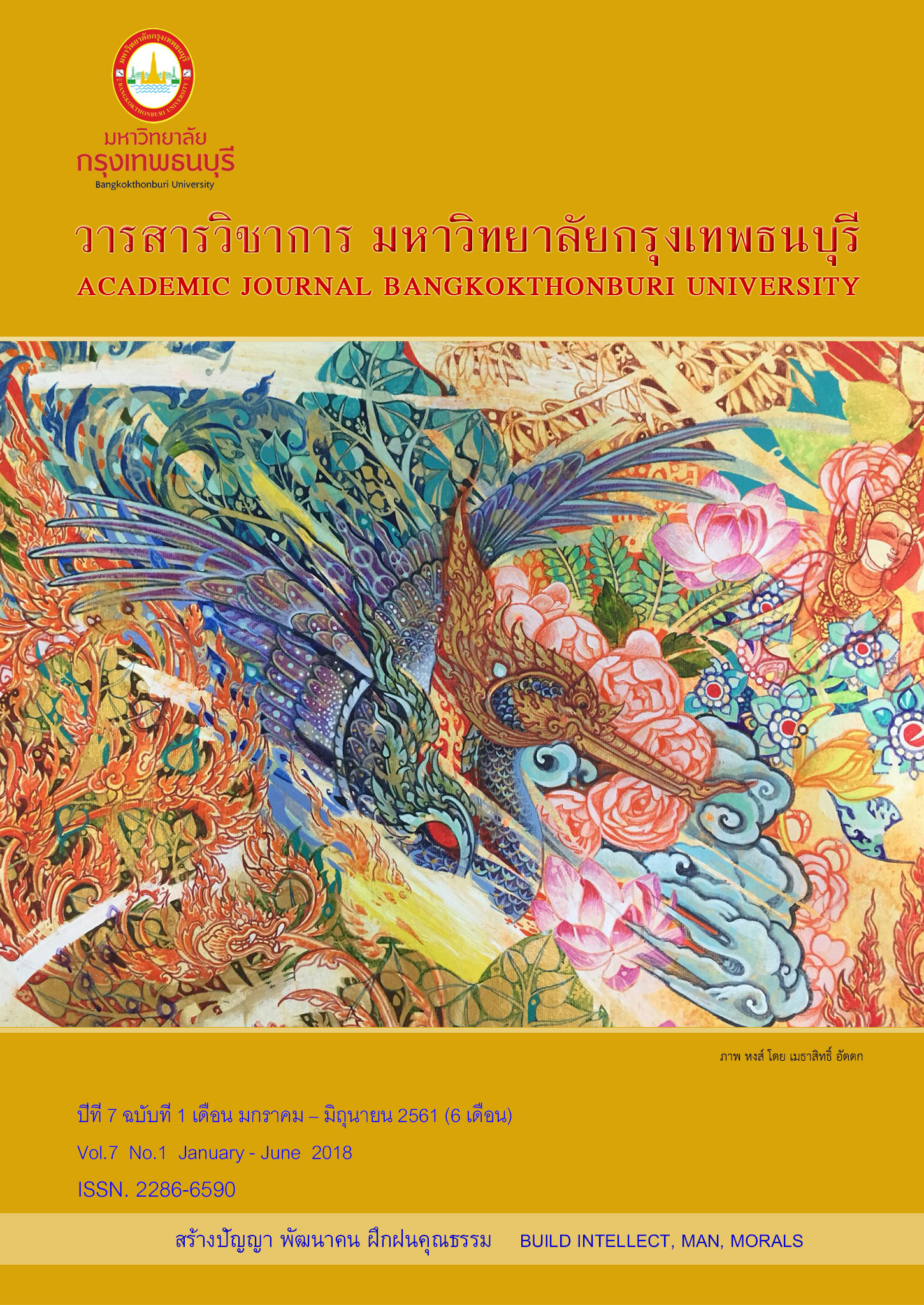A Creation of Digital Professional Learning Community for Effectiveness Communication
Main Article Content
Abstract
This research had as its objective a study of “A Creation of Digital Professional Learning Community for Effectiveness Communication”. The monitoring survey sample consists of 30 teachers from region 9 provinces and the developing survey sample consisted of 30 teachers (from schools in Eastern part of Thailand) and 20 specialists in the improvement of communication system for professional learning community. The instruments used were communication system for professional learning community, a system quality assessment, a system effectiveness assessment, a communication effectiveness assessment, a satisfaction assessment, and a tool quality assessment designed to increase the efficiency of communication by experts from the PLC which consists of 3 important parts; a personal knowledge base, a show room, and a reflection room. The results of these system quality and system effectiveness assessments according to the suitability viewed by experts found that they were in a good level
respectively. It was found that after the method being used, the team’s effectiveness in communication internally affects in quality of work was in a great level and the users’ satisfaction level was also in a great level The results of regression analysis revealed that each variable had a factorial loading effect. The results were consistent with the research framework, viz. the satisfaction of system usage had more factorial loading effect on encouraging the users on communication. It gave opportunity for users in participating, studying the previous lesson, linking the old and new knowledge with variety and suitability, stimulate the users for usage, and interest and motivation of the system were at .69, .65, .60, .59, .50, and .49 respectively. The efficient communicative variable had a similarity on factorial loading effect and sub-variables on changes in team communication behavior. It had the factorial loading effect on more communication with colleagues, having more jobs related conversations with colleagues, smaller team meetings are friendlier, teammates‟ opinions had being heard and they are more cooperative, and when problem arises, there will be more consultation in the team were at .86, .78, .75, .65, and .54 respectively. The efficient communication on changes of communication to quality of work had the factorial loading effect on reducing loneliness in work, better work process and work result, better team and related personal relationship, setting targets and collaborating together more were at .80, .79, .67, and .64 respectively
Article Details
References
Hord, S. M., Roussin, J. L., & Sommers, W. A. (2009). Guiding professional learning communities: Inspiration, challenge, surprise, and meaning. Corwin Press.
Jochen, Prümper. (2010). ISONORM 9241/110-S: Evaluation of software based upon
International Standard ISO 9241, Part 110. Berlin: HTW.
Johnson, Roger T, & Johnson, David W. (1986). Action research: Cooperative learning in the science classroom. Science and Children, 24, pp. 31-32.
Mackler Mark. (2001). Influence on the performance of organizational knowledge transfer. A dissertation submitted to the Faculty of the College of Business in Partial Fulfillment of the requirements for the degree of Doctor of Philosophy Florida Atlantic University.
Martin M. (2011). Professional Learning Communities. In Contemporary Issues in Learning and Teaching, pp.142-152. London: SAGE Publications Ltd.
McLaughlin, M. W., & Talbert, J. E. (2006). Building school-based teacher learning communities: Professional strategies to improve student achievement (Vol. 45). Teachers College Press.
Mitnik, Rubén, Recabarren, Matías, Nussbaum, Miguel, & Soto, Alvaro. (2009). Collaborative robotic instruction: A graph teaching experience. Computers and Education, 53(2), pp. 330-342.


